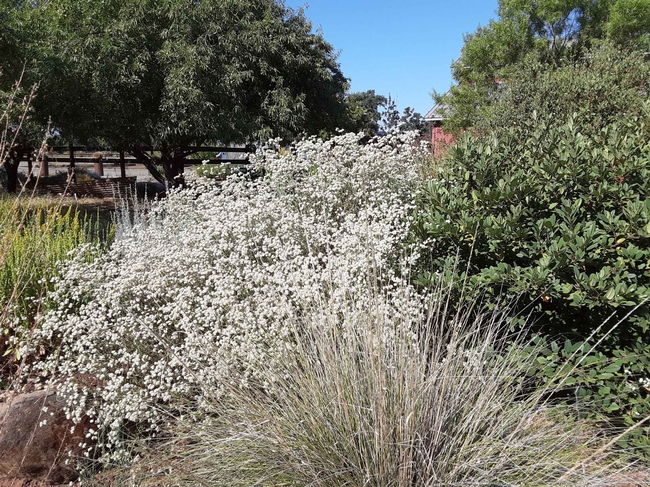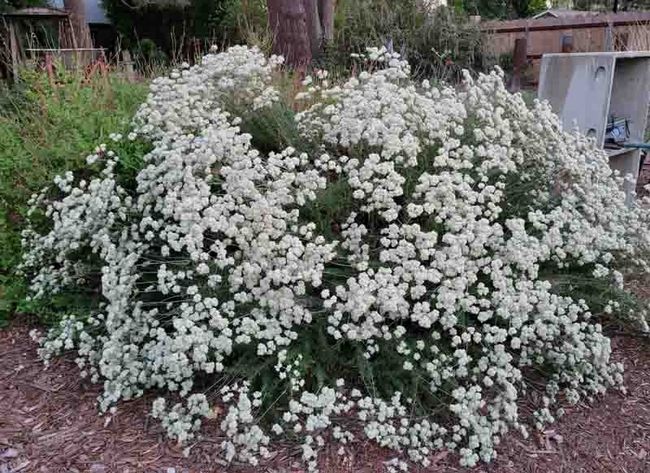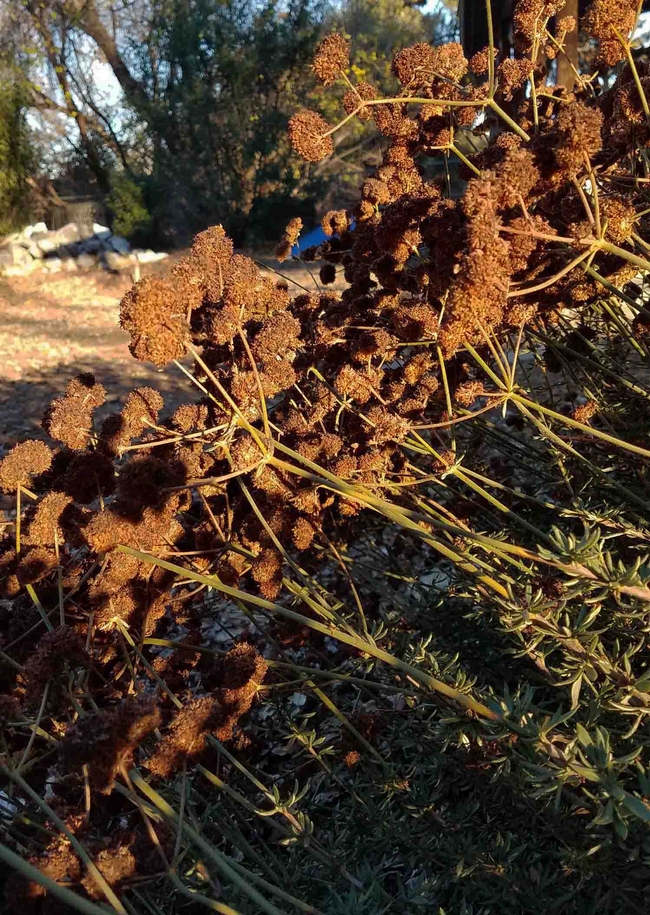Continuing our focus on select species of Eriogonum (wild buckwheat), this week's discussion features California buckwheat (E. fasciculatum).

Species Focus - California Buckwheat
Eriogonum fasciculatum, best known as California buckwheat and sometimes called eastern Mojave buckwheat or flat-topped buckwheat, is found primarily on dry slopes and canyon washes in the American West, including Nevada, Utah, and Arizona, in addition to California and reaching as far as Mexico's northwest. In California it is the most widespread of the shrubby buckwheat species, found in abundance in the southern half of our state. It is less common in the Central Valley and northern reaches, although it has proven to be a successful a landscape plant in Butte County. Its adaptation to our Mediterranean climate allows it to survive on as little as seven inches of rain annually.

According to California Native Plants for the Garden (an excellent resource for gardeners looking to shift from traditional thirsty landscaping to a yard that conserves water and sustains pollinators), the hairs on E. fasciculatum's leaves contribute to its ability to withstand the dry and harsh conditions of the ecosystems it inhabits. Hairy leaves provide insulation from heat and protection from direct sunlight as well as a boundary air layer that reduces water loss.
Its genus name, fasciculatum, comes from the Latin word meaning “bundles,” used in botany to refer to the growth habit of plant leaves. It shares this genus name with many other plant species.

Native American peoples in the west and southwest used different parts of the California buckwheat for nutrition and medicine. The Cahuilla tribe of what is now the greater Palm Springs area used this plant in many ways: they treat headaches and stomach pains with tea made from its leaves; treated colds and sore throats with tea made by steeping its roots; and applied poultices made from pounded roots to wounds. Cahuilla peoples also treated heart problems with tea from the dried flowers and dried roots of E. fasciculatum. Modern science has verified that a chemical compound common to several plant species including Eriogonum can be beneficial to hearts (USDA Plant Profile).
The Natural Resources Conservation Service, a division of the US Department of Agriculture, identifies and experiments with natives and other plants for their conservation value - primarily their ability to protect soils from erosion, revegetate burn scars, and provide habitat and sustenance to wildlife as an aid in controlling agricultural pests. Their experiments with California buckwheat show that it has superior value in all three of these categories. The USDA Plant Profile for E. fasciculatum classifies its performance as a conservation plant on critical areas and problem soils as “excellent.” It receives another “excellent” mark for providing “nectar sources for beneficial insects when planted next to crops as part of an (IPM) Integrated Pest Management program.” They recommend the use of its seeds in seed mixes introduced to burn scars for revegetation. Finally, California buckwheat gets USDA bonus points because it is “ideal for environmental enhancement uses” (government-speak for “beautiful in the landscape”).

A number of buckwheat species, including a large lovely California buckwheat, are thriving in the Butte County Master Gardener Demonstration Garden at Patrick Ranch (located just south of Chico on the Midway). At this time of year, they are abuzz with bees, and visited often by butterflies. Due to our current safety measures, no human visitors are allowed, but we look forward to seeing you there in the future, so you can appreciate the fascinating buckwheat family and our gardens in general.
For more information on E. fasciculatum, see the following sources:
United States Department of Agriculture, Natural Resources Conservation Service, Plants Database
Carol Bornstein, David Fross, and Bart O'Brien, California Native Plants for the Garden (Cachuma Press, 2005).
UC Master Gardeners of Butte County are part of the University of California Cooperative Extension (UCCE) system. To learn more about us and our upcoming events, and for help with gardening in our area, visit our website. If you have a gardening question or problem, email the Hotline at mgbutte@ucanr.edu or leave a phone message on our Hotline at (530) 538-7201. To speak to a Master Gardener about a gardening issue, or to drop by the MG office during Hotline hours, see the most current information on our Ask Us Hotline webpage.